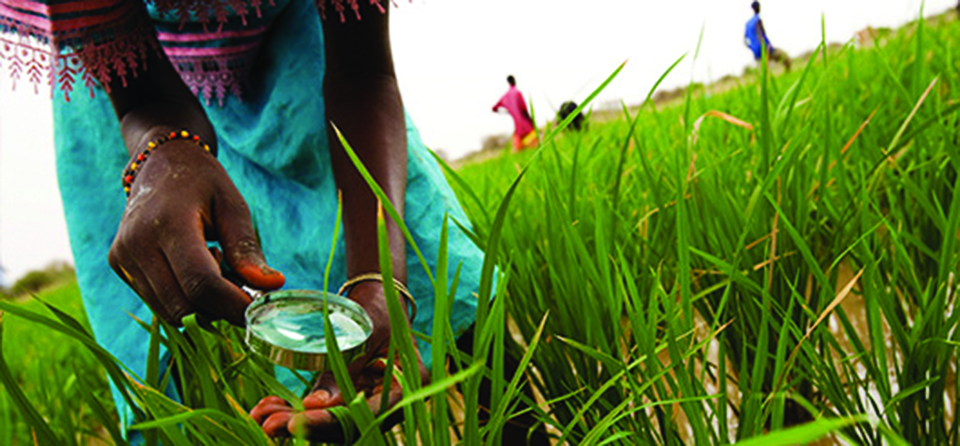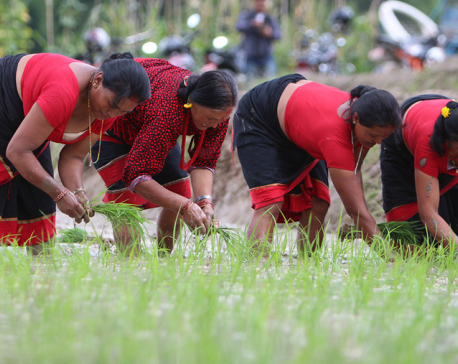
OR


Maria Helena Semedo
The author is Deputy Director-General (Natural Resources) of Food and Agriculture Organization of the United Nationsnews@myrepublica.com
More from Author
We must acknowledge that the agricultural sectors have the potential to contribute to the protection of biodiversity
Over the next few decades, we have to eradicate hunger, and do so for a growing population. And we’ll have to do that amid climate trends that will require our food systems, starting with the agricultural sectors, to become increasingly flexible, resilient and adaptable.
Providing nutritious food to a growing world population poses many challenges. To address these challenges, we need to make crop and livestock systems, forests, fisheries and aquaculture more productive while guaranteeing the ability of landscapes and seascapes to provide other essential ecosystem services as regulation of air quality, soil fertility, crop pollination or even control of natural disaster as floods.
We’ll need to put a lot of natural capital—especially biodiversity—to work to do that.
While the loss of biodiversity is occurring at an alarming rate, agricultural systems are becoming simpler, wider and more uniform with less diversity in terms of species, varieties and breeds. Some 150 livestock breeds have become extinct between 2000 and 2018.
But globalized food systems have led to only a few crops providing the lion’s share of what we eat. Just eight crop species—dominated by wheat, rice and maize—provide more than half of our average daily food. Widespread use of nitrogen fertilizers has done wonders for output. But it has triggered water pollution that in turn provokes costly drinking-water crises for local communities. When carried by rivers to the sea, this creates dead zones hostile to marine ecosystems.
Action is requested to safeguard our planet’s rich resources. What we need is a stronger and more focussed commitment to halt the losses of biodiversity for food and agriculture and make sustainable and equitable use of what remains while promoting diversification.
We must consider biodiversity as a value across all sectors—in agriculture, fisheries, forestry and beyond—even in how and what we consume. FAO has rolled out a Biodiversity Mainstreaming Platform precisely to foster the kind of cross-disciplinary dialogues that can lead to a transformational change in the way we tackle this challenge.
It is an existential challenge, and an achievable one. For millennia, farmers have cultivated and bred in a way that maintained ecosystems and species and conserved genetic resources for food and agriculture where the adoption and spread of best practices was a proxy for success. As agriculture is biodiversity’s biggest user, it must become its ally.
After all, the human touch need not be a disaster! A recent study from Brazil found that earthworm density—a proxy for soil biodiversity—is actually higher in areas practising minimal tillage or integrated crop-and-livestock practices than in areas people aren’t managing.
The guiding principle is that we must manage our natural assets more sustainably. If we do, we can meet the world’s food demands while mitigating and avoiding the high deferred costs of the Green Revolution.
Biodiversity is about dynamic relations rather than silver-bullet solutions. For example, pollinators such as bees can only benefit from reduced exposure to pesticides, but they also need ecological niches offering food and nesting areas. Biodiversity can also be fostered through our diets, very often to our own benefit.
Different rice varieties can thrive in different climate conditions, and also offer a wider range of nutritional qualities—with up to eightfold differences in iron content—underscoring the importance of efforts to conserve and support many cultivars. On top of that, planting diversified crops often lead to higher yields as harvests prove resilient to volatile pest, weather and farming conditions.
Our consumption choices also matter, especially as we are overexploiting what in fact is only a tiny share of nature’s bounty. Nine crops account for more than two-thirds of all crop production, and around 200 practically all of it—even though over history we have used more than 30,000 plants for food and cultivated more than 6,000 of them. This leads to unwelcome outcomes such as micronutrient deficiency in Micronesia, where imported leafy green vegetables that locals don’t appreciate have pushed the local yellow-fleshed giant swamp taro off the menu.
Approaches such as agroecology and programs like FAO’s Globally Important Agricultural Heritage Systems, with its 50 designated sites around the world, are helpfully raising awareness both of agricultural biodiversity’s ongoing importance and of the ingenious ways people harnessed it in the past to create mutually sustainable livelihoods and ecosystems.
We need to shift to more sustainable food systems with lower environmental costs. And we must acknowledge that the agricultural sectors have the potential to contribute to the protection of biodiversity.
Today there is a consensus: productive farming can provide environmental benefits while creating rural employment and sustaining livelihoods. Agroecology and other approaches can play a significant role.
Recognizing, protecting and capitalizing on biodiversity will take a lot of teamwork. It is time to act together to achieve common understanding, direction and commitment to protect diversity in order to produce enough nutritious food in the face of challenges, such as climate change, emerging diseases, pressures on feed and water supplies and shifting market demands of a growing human population.
The author is Deputy Director-General (Natural Resources) of Food and Agriculture Organization of the United Nations
You May Like This

Infographics: Genetic resources and biodiversity for food and agriculture
Genetic resources and biodiversity for food and agriculture ... Read More...

UN official welcomes indigenous input in next global biodiversity policy
UNITED NATIONS, April 23: The head for the UN Convention on Biological Diversity pledged Monday "a wide open door" for... Read More...

Restructuring agriculture
All agriculture related ministries and line agencies should work together on restructuring agriculture. But they are working in isolation. ... Read More...

Just In
- Indians vote in the first phase of the world’s largest election as Modi seeks a third term
- Kushal Dixit selected for London Marathon
- Nepal faces Hong Kong today for ACC Emerging Teams Asia Cup
- 286 new industries registered in Nepal in first nine months of current FY, attracting Rs 165 billion investment
- UML's National Convention Representatives Council meeting today
- Gandaki Province CM assigns ministerial portfolios to Hari Bahadur Chuman and Deepak Manange
- 352 climbers obtain permits to ascend Mount Everest this season
- 16 candidates shortlisted for CEO position at Nepal Tourism Board






_20220508065243.jpg)











Leave A Comment